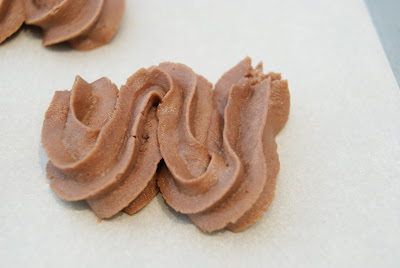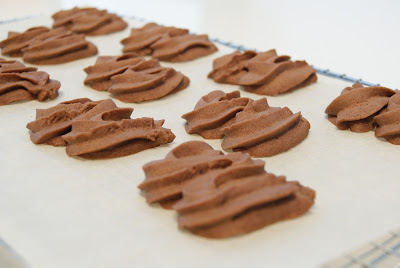What I love about French baking recipes:
1. The measurements are super precise. Everything is weighed with a scale down to the gram...even water. There is virtually no room for error, given that you have an accurate kitchen scale and the ability to follow simple directions. (Unless you are striving for finicky treats like macarons....in which case, just keep trying...)
2. Most French pastries have a long history, concocted before the time of KitchenAid mixers and food processors, hence most recipes come together by hand. If you have a bowl, a wooden spoon and a whisk, then you're set. The result? A light, delicate pastry and little cleanup afterwards!
3. French pastries are romantic. Yes, romantic. If you have ever read a recipe description from Pierre Hermé, you will know what I mean.
What I DO NOT love about French baking recipes:
1. I am collecting a ridiculous amount of French cook books, most of which are overflowing from the bookshelves and are in piles on the floor in various heaps...
2. I am buying a ridiculous amount of butter. In a household of just two people, I have become a weekly shopper at Costco just to buy butter.
Though for some odd reason...I still constantly find myself leafing through those cookbooks, searching for the next thing to bake. Maybe this is becoming an addiction...
Anyhow, the Viennese sablé is a classic Austrian soft butter cookie, made two different ways by two world-renowned French bakeries. Ladurée's version yields, of course, a traditional crumbly and buttery sablé. Pierre Hermé's rendition involves cocoa powder, resulting in a light, chocolaty "melt-on-your-tongue" texture. Both versions are, needless to say, delicious and heavenly, and both are surprisingly easy to make.
Sablés Viennois
from Sucré by Ladurée
190 grams butter
pinch of salt
75 grams confectioners' sugar (plus more for decoration)
pinch of vanilla powder*
1 egg white
225 grams flour
*As I did not have any vanilla powder on hand, I substituted my cookies with seeds from one vanilla bean.
Preheat oven to 150°C. Set up two baking sheets lined with parchment paper.
Cut butter into small pieces, add salt and place over a double-boiler with simmering water.
With a wooden spoon, mix until it is the consistency of soft cream (or mayonnaise). Whisk until smooth.
Add in, respectively, the confectioners' sugar, vanilla and egg whites, whisking each ingredient until it is fully incorporated before adding the next.
Sift flour over butter mixture. With a wooden spoon, mix until dough is smooth and homogenous.
Spoon dough into a disposable pastry bag fitted with a large star tip. Pipe dough onto prepared baking sheets in a Z-or W-shapes.
Bake for 15-20 minutes, or until edges are slightly golden.
Cool on a wire rack. If desired, dust lightly with confectioners' sugar just before serving.
Viennese Chocolate Sablés
from Chocolate Desserts by Pierre Hermé
260 grams all-purpose flour
30 grams Dutch-processed cocoa powder, preferably Valrhona
250 grams unsalted butter, at room temperature
100 grams confectioners' sugar, sifted
pinch of salt
3 tablespoons egg whites, lightly beaten
confectioners' sugar for dusting (optional)
Position the racks to divide the oven into thirds and preheat the oven to 350ºF (180ºC). Line two baking sheets with parchment paper and set aside. Fit a pastry bag with a medium-sized open star tip and keep it close at hand.
Whisk together the flour and cocoa and keep close at hand.
In a large bowl, beat the butter with a whisk until it is light and creamy -- for the recipe to be successful, the butter must be very soft.
Whisk in the sugar and salt, then stir in the egg whites. Don't be concerned when the mixture separates; it will come together when you add the dry ingredients. Gradually add the flour-cocoa and blend only until it is incorporated -- you don't want to work the mixture too much once the flour is added, a light touch is what will give these cookies their characteristic crumbliness.
Because the dough is thick and somewhat heavy, it's best to work with it in batches. Spoon about one-third of the dough into the pastry bag. Pipe the dough into W-shaped cookies, each about 5 cm long and 3 cm wide, 2 cm apart onto the prepared baking sheets.
Bake the cookies for 10 to 12 minutes -- no more -- or until they are set but neither browned nor hard. Using a wide metal spatula, transfer the cookies to a rack to cool to room temperature.
Repeat with the remaining dough, making sure that you don't put the to-be-baked cookies on hot baking sheets. Before serving, you can dust the cookies with confectioners' sugar.



















Thank you for recipes, they look gorgeous!
ReplyDelete